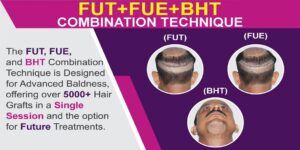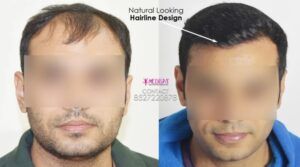
One of the most well-known cities in India is Bangalore, sometimes known as “the city of lakes.” It serves as India’s hub for high-tech manufacturing. In Bangalore, there are numerous medical facilities with the most modern technologies. There are many cosmetic surgery clinics in the city, but only a handful of them have a good reputation. Bangalore has a thriving hair transplant market thanks to the large number of clinics offering the treatment. Yet, there are very few clinics that offer top-notch hair transplants. When compared to other major Indian cities, hair transplant cost in Bangalore has a higher than average for hair transplants.
For the best hair transplant results at a reasonable price, the majority of Bangalore’s hair loss sufferers travel to other well-known locations. Although there are a few known doctors for hair transplant in Bangalore, Jaipur and Delhi are still chosen because they are the two cities with the largest hair transplant markets.
WHY MEDISPA HAIR TRANSPLANT CLINIC IS UNIQUE THAN OTHER CLINICS?
- We provide the best hair transplant facilities and world-class hair transplant results.
- One of India’s most renowned and well-known hair transplant surgeons, Dr. Suneet Soni, is the director of the Medispa hair transplant clinic.
- We are one of the most popular tourist destinations for hair transplants worldwide.
- Hundreds of patients have successfully had successful hair transplants, and they can attest to their incredible experiences. Hundreds of patients add items to our bucket list each year.
- Each hair transplant’s surgical part and aesthetic part is carried out by Dr. Suneet Soni alone, ensuring the satisfied outcomes.
What are prosthetic hairs and its effectiveness?
Prosthetic hairs, often known as personalised or custom wigs designed for bald individuals, are non-surgical hair replacement methods.
Prosthetic hairs are unmistakably different from the hair wigs that are sold in the market to fill in bald spots. They resemble patches in appearance and are constructed of specialist material that is created for the patient’s balding area or the area with decreased hair density. The artificial hairs are concealed by a thin fabric covering that is precisely shaped to resemble the scalp’s skin. This could be a short-term or long-term option to cover up bald spots or hair loss.
These wig types closely resemble natural hair in appearance and are coupled to a device that does not obstruct the regular breathing of your skin. These hairs are of excellent quality, and either real human hair or hair that closely resembles human hair is used. The experts who carry out these procedures carefully examine your scalp before preparing the prosthesis based on your natural hair colour, skin tone, and texture.
The prosthesis does not need to be taken off at night, in the shower, or while swimming. They need to be replaced every six to twelve months, so they are not a long-term fix. The durability and care of a material are determined by its quality.
Here are the instructions for making prosthetic hairs:
- The base is created by molding after an impression of the region is taken.
- The base is made specifically with a non-toxic, hypoallergenic inert material.
- The hairs are meticulously positioned with the specific bald area’s aesthetics and hairline style in mind.
What is hair transplantation? How it is done?
Only hair transplant operations can provide lasting results and an identical natural appearance for hair loss issues. It entails removing hair follicles from the donor area that are sufficiently surrounded by tissues, then transplanting them to the target bald location. Just your own hairs should be used for the treatment, which is only possible if you have enough hair on hand.
FUE and FUT hair transplant techniques are two methods that can be used to execute the hair transplant surgery. These procedures use a variety of harvesting techniques that can be chosen depending on the patients’ needs.
The procedures involved in hair transplantation include:
- Hair trimming in accordance with the technique’s requirements
- Applying local anaesthetic to the bald spots of the donor and recipient
- Using one of the two methods to remove hair follicles from the designated donor area: Techniques for FUE or FUT hair transplants
- Slit creation at recipient’s balding area
- Inserting the follicular units into the ready slits.
- Instructions and follow-ups posted
Differences between prosthetic hairs and hair transplantation
- Invasiveness: Hair transplant procedures are minimally invasive and painless and use prosthetic hairs instead of traditional surgical methods.
- Permanence: Hair transplants produce results that are permanent, whereas prosthetic hairs can be temporary or semi-permanent.
- Natural appearances: Even the highest quality prosthetic hairs could be recognized by spectators, but a hair transplant done by skilled hands looks entirely genuine.
- Replacements: Unlike hair transplants, which are permanent for life, prosthetic hairs require continual replacement every six to twelve months.





